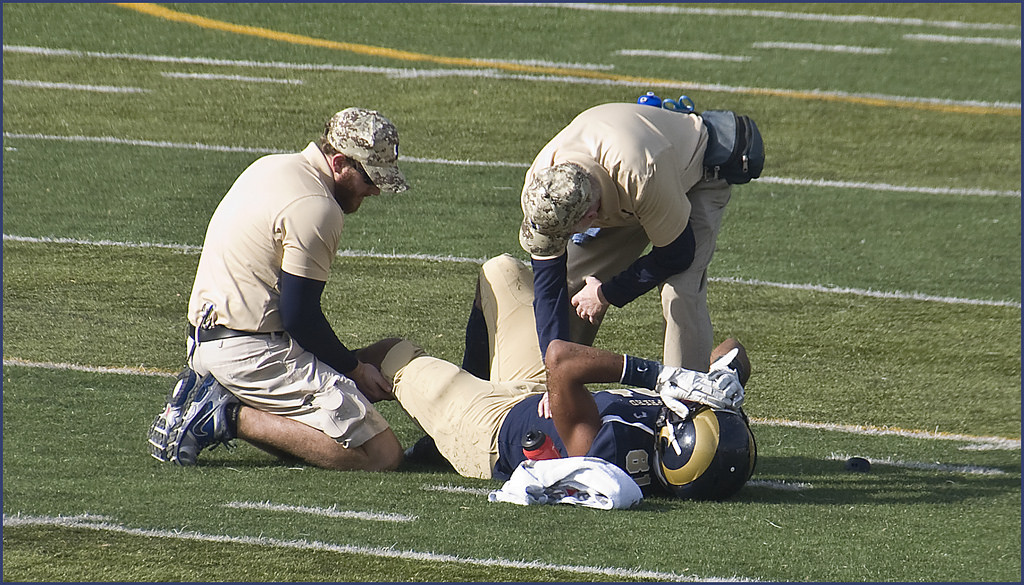
Dizziness and vertigo are symptoms of a concussion. But, they can also remain a problem long after a concussion is treated. Physical therapists who specialize in concussions can treat vertigo.
Many people experience dizziness and vertigo right after hitting their head hard enough to cause a concussion. In fact, apart from losing consciousness and nausea, dizziness and vertigo are often the first symptoms to show up right after the event. Like headaches, these symptoms can linger long after the initial head trauma and can even develop or worsen as the days go on if not treated.
Vertigo and dizziness can often resolve on their own. For many patients, however, they can become persistent and affect their everyday life. While the concussion is being treated, these symptoms will need special treatment.
What Is The Difference Between Vertigo And Dizziness?
Although often confused because of their similarities, vertigo and feeling dizzy are two completely different symptoms. According to the U.S. National Library of Medicine, dizziness is more like disorientation whereas vertigo is the feeling of spinning.
When you’re dizzy, you may feel lightheaded, woozy, or disoriented. If you feel like you or the room are spinning, you have vertigo. These feelings may make you lose your balance.
Vertigo, on the other hand, is the feeling of spinning either from inside your head or that the room is spinning around you. It can often precipitate the feeling of dizziness.
Vertigo and dizziness can be caused by different factors, but Benign Paroxysmal Positional Vertigo (BPPV) is primarily caused by head trauma. BPPV is often the direct cause of persistent or recurring dizziness following a concussion. When your head hits something hard, the forces of the impact cause debris in the inner ear canal to break free. These pieces floating around cause vertigo and dizziness. The brain requires proper functioning of the ears to process information. However, when that information is inaccurate due to BPPV, it relies heavily upon the eyes to stabilize the head and regain balance. This can then cause vision problems as it leads to fatigue, leading to eyestrain and tension headaches.
Handpicked Content Patient Success Story: Concussion Recovery How To Tell If Your Child Has A Concussion What Happens To Your Brain Post-Concussion?
According to research, most athletes that experience head trauma show problems with the nerve signals in the brain related to BPPV. These symptoms can last up to and even occur within 30 days after the event.
If your vertigo and dizziness are the results of a blow to the head, physical therapy can be an effective form of treatment for both. Physical therapy not only relieves the symptoms of a concussion. It helps with eyestrain and headaches caused by vision problems associated with the concussion.
How Does Physical Therapy Treat Vertigo?
The treatment program your physical therapist develops for you will depend on the cause of your vertigo and your specific symptoms. Often, the treatment is about teaching you how to cope with the symptoms such as doing activities a different way to reduce the dizziness. This coping is just until your concussion symptoms subside completely, which can depend on a case by case basis.
A physical therapist can also give you exercises, usually focused on vision, to help treat vertigo. These exercises focus on improving your balance, correcting the differences between your inner ears, and improve your ability to focus your eyes and vision, according to the American Physical Therapy Association.
It can sometimes take a few sessions before a patient sees improvements in their symptoms. However, with exercises focusing on eye coordination and strengthening, the symptoms should subside over time. Such strengthening exercises include looking near and far and concentrating and following something that is moving.
These exercises can be done at home as well, which can often speed up recovery.
Related Content:
5 Concussion Facts You Probably Didn’t Know
Why You Shouldn’t Wait To Get Your Concussion Examined
Children And Concussions


